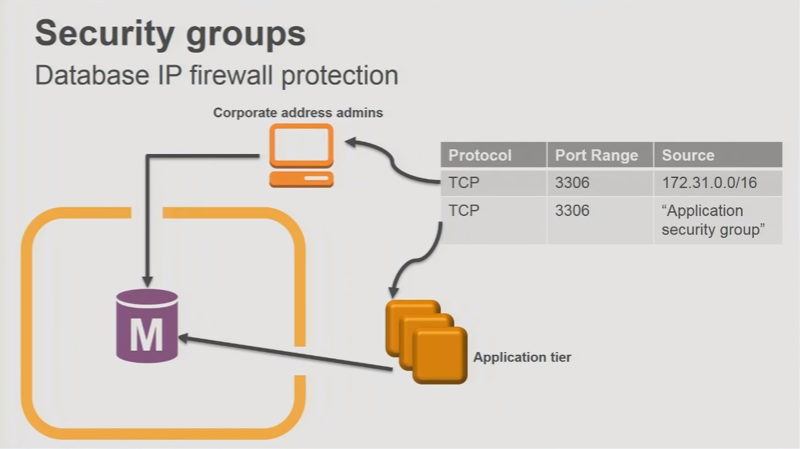This is exactly similar to what we learned in Chapter 6, AWS Elastic Compute Cloud. This is also called VPC Security Group. Security Groups are layers of protection and act as a virtual firewall. You create the DB Security Group the same way as we did earlier. Setting up appropriate ingress and egress on the database Security Group will help you control the incoming and outgoing traffic to and from the database. In this case, you also specify the protocol, port, and source of the incoming traffic. The source could be a single IP address, a range of IP addresses, or another Security Group which is an application/web server Security Group.

Let's create a Security Group that we can use for spinning up RDS instances. Port 3306 is the default port for MySQL and 1521 is the default port for Oracle. We created a VPC vpc-a6bb60df in Chapter 5, AWS Virtual Private...



